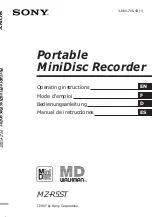
85
RQT9079
Protection
You can prevent accidental deletion by setting writing protection or
deletion protection.
RGB
This refers to the three primary colours of light, red (R), green (G),
and blue (B) and also the method of producing video that uses them.
By dividing the video signal into the three colours for transmission,
noise is reduced for even higher quality images.
Sampling frequency
Sampling is the process of converting the heights of sound wave
(analog signal) samples taken at set periods into digits (digital
encoding). Sampling frequency is the number of samples taken per
second, so larger numbers mean more faithful reproduction of the
original sound.
Signal Quality
This is the guide for checking the aerial direction. The numbered
values displayed do not indicate the strength of the signal, but the
quality of the signal (the signal to noise ratio, or “S/N”). The channels
you can receive are affected by weather conditions, seasons, time
(day/night), region, length of the cable that is connected to the aerial,
etc.
Thumbnail
This refers to a miniature representation of a picture used to display
multiple pictures in the form of a list.
1080i
In one high definition image, 1080 (1125) alternating scan lines pass
every 1/50th of a second to create an interlace image. Because
1080i (1125i) more than doubles current television broadcasts of
480i (525i), the detail is much clearer and creates a more realistic
and rich image.
1080p
In one high definition image, 1080 (1125) scan lines pass at the
same time every 1/50
th
of a second to create a progressive image.
Since progressive video does not alternate scan lines like interlace,
there is a minimal amount of screen flicker.
720p
In one high definition image, 720 (750) scan lines pass at the same
time every 1/50
th
of a second to create a progressive image. Since
progressive video does not alternate scan lines like interlace, there
is a minimal amount of screen flicker.
Gl
os
s
a
ry
DMREX78&88EG&EC&EF-RQT9079-L_eng.book 85 ページ 2008年2月27日 水曜日 午後3時11分




































